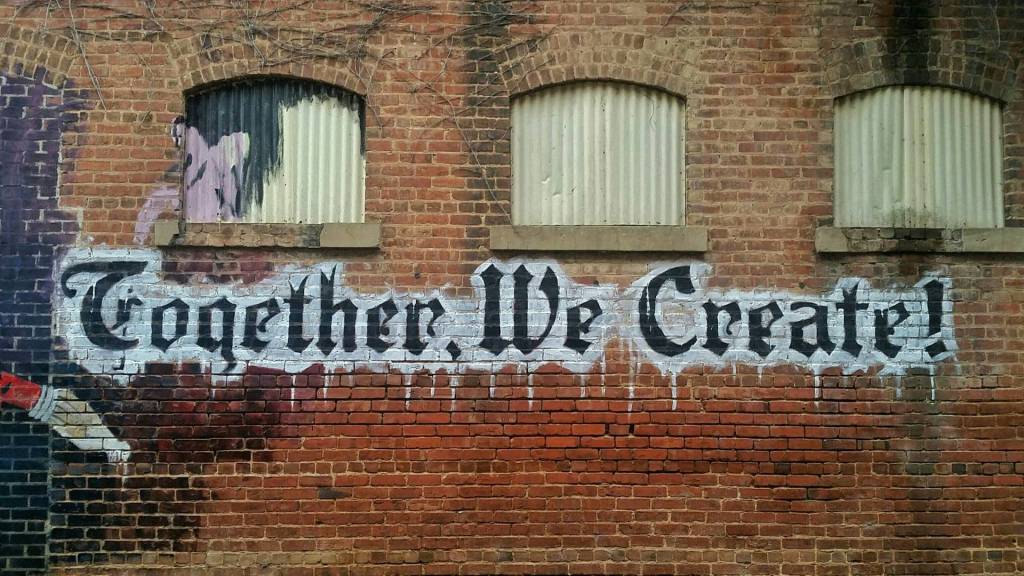In this podcast, I narrow down the top social media tools for building your personal brand into a POWERHOUSE. At the end of the podcast, I will conclude by telling you what I feel the #1 tool is and explain why, while eliminating the others along the way. You will notice that my brand is represented in all of the following. If I endorse a social network, it means you can trust my judgement and that it will have a positive impact on your personal brand. The reason for this is simply because reserving your brand name on over 2,000 social networks doesn’t make sense. It’s not manageable and will hurt you, instead of provide value or ROR (return-on-relationship). Join the one’s that help solve your professional or personal problems, that are popular, credible and relevant to your current situation.
The Top Social Media Tools
Facebook: With 63 million active users from around the world and now more professionals than college students, joining Facebook is a requirement. If you go to a party, a barmitzvah, a sports game or have a job, you realize quickly how much people count on Facebook to run their lives and keep in touch. Aside from creating a group or event (marketing strategy), there are social ads for your business, you have a news feed from your network, so you can follow them, without asking them. Facebook is a great central resource for your brand and ranks extremely high in Google (helps you establish great e-presence). The downside is that, as your network flourishes, it becomes a wasteland of clutter (think of all the apps).
students, joining Facebook is a requirement. If you go to a party, a barmitzvah, a sports game or have a job, you realize quickly how much people count on Facebook to run their lives and keep in touch. Aside from creating a group or event (marketing strategy), there are social ads for your business, you have a news feed from your network, so you can follow them, without asking them. Facebook is a great central resource for your brand and ranks extremely high in Google (helps you establish great e-presence). The downside is that, as your network flourishes, it becomes a wasteland of clutter (think of all the apps).
LinkedIn: A lot of people don’t leverage LinkedIn properly and as a result, they barely use it’s true power. ![]() I’m a victim of this as well and to me it has become a moving repository of contacts that remains lifeless, as I bridge new relationships using Facebook, Twitter and email communication. The value in this tool stems from your ability to ask and answer questions to your network, export contacts, develop a virtual resume and finally, by using a unique link (you better create one with your name linkedin.com/in/danschawbel for example) to your profile, you can have that on your blog or website.
I’m a victim of this as well and to me it has become a moving repository of contacts that remains lifeless, as I bridge new relationships using Facebook, Twitter and email communication. The value in this tool stems from your ability to ask and answer questions to your network, export contacts, develop a virtual resume and finally, by using a unique link (you better create one with your name linkedin.com/in/danschawbel for example) to your profile, you can have that on your blog or website.
Twitter: Everyone is so passionate and crazed about Twitter for a few legitimate reasons. For one, you can![]() connect with people that you wouldn’t have access to before, such as Jason Calacanis and Kevin Rose. Also, you can force personal brand recognition by using the “@theirname” in your Tweet (message), so upon response, the receiver will get to know your name (Hat Tip: Jim Kukral). Twitter is an amazing marketing tool (just ask Guy Kawasaki) because it allows you to push messages quickly to your followers (audience) and either direct them to the location of your choice or provide another resource. In terms of PR, the TwitPitch makes absolute sense in how you can type out a 140 character pitch on your brand, that reporters would typically get in their email (Hat Tip: Stowe Boyd). The downfall of Twitter is it’s inability to scale, decentralize and the amount of times it’s not working.
connect with people that you wouldn’t have access to before, such as Jason Calacanis and Kevin Rose. Also, you can force personal brand recognition by using the “@theirname” in your Tweet (message), so upon response, the receiver will get to know your name (Hat Tip: Jim Kukral). Twitter is an amazing marketing tool (just ask Guy Kawasaki) because it allows you to push messages quickly to your followers (audience) and either direct them to the location of your choice or provide another resource. In terms of PR, the TwitPitch makes absolute sense in how you can type out a 140 character pitch on your brand, that reporters would typically get in their email (Hat Tip: Stowe Boyd). The downfall of Twitter is it’s inability to scale, decentralize and the amount of times it’s not working.
Blogs: I’m at the point, where I cannot talk about personal branding without mentioning blogs. Frankly, it’s![]() impossible to avoid blogging because it’s a continuous rendition of your life, knowledge, passion and the material actually helps people. Blogs are amazing because of the Theory of eBrand Attraction, the delivery of value, the monetization, the acceptance by our society (and mainstream media) and the ability to form a community to connect to others in a fraction of the time you could have done it before. If you don’t have a blog, you might want to study Scott Monty’s, Jeremiah Owyang’s, Valeria Maltoni’s, and Drew McLellan’s for excellent examples (good personal branding).
impossible to avoid blogging because it’s a continuous rendition of your life, knowledge, passion and the material actually helps people. Blogs are amazing because of the Theory of eBrand Attraction, the delivery of value, the monetization, the acceptance by our society (and mainstream media) and the ability to form a community to connect to others in a fraction of the time you could have done it before. If you don’t have a blog, you might want to study Scott Monty’s, Jeremiah Owyang’s, Valeria Maltoni’s, and Drew McLellan’s for excellent examples (good personal branding).
Wiki’s: I think this tool is completely underestimated. Aside from the obvious example of Wikipedia, a wiki![]() allows you to collaborate with one or more individuals and the best way to network is by creating projects and working on them with people. Think about it; don’t you build stronger rapport with people you accomplish something with? There is an obvious business application, but personally, your perceived as more tech savvy when you use them and you can create lists of people, things to do, or start your own personal projects.
allows you to collaborate with one or more individuals and the best way to network is by creating projects and working on them with people. Think about it; don’t you build stronger rapport with people you accomplish something with? There is an obvious business application, but personally, your perceived as more tech savvy when you use them and you can create lists of people, things to do, or start your own personal projects.
Ning: A lot of people underestimate Ning, even with over 180,000 social networks. The fact that anyone![]() can build their own social network gives it a personal edge and allows one to take a leadership role within their own community, on the topic of their choice. One of the main issues with Ning, just like many other social networks, is that it is far too cluttered and it’s not as customizable as it should be. If you start a network on Ning without a clear objective, just like all the rest, then it will be abandoned at some point.
can build their own social network gives it a personal edge and allows one to take a leadership role within their own community, on the topic of their choice. One of the main issues with Ning, just like many other social networks, is that it is far too cluttered and it’s not as customizable as it should be. If you start a network on Ning without a clear objective, just like all the rest, then it will be abandoned at some point.
YouTube: In January 2008 alone, nearly 79 million users watched over 3 billion videos on YouTube. The con is that your podcast is one of 3 billion, but the pro is that there are 79 million possible users that may watch your podcast. The bigger pro is that you can take a podcast from YouTube and stick it on your blog or personal website (and others can do the same). Video is extremely hot right now (as Paris Hilton would say) and I truly believe it’s the closest thing you can get to meeting someone without ever speaking to them. Some posts have too much passion and emotion behind them, so traditional posts won’t be able to express how you’re feeling about a particular subject.
con is that your podcast is one of 3 billion, but the pro is that there are 79 million possible users that may watch your podcast. The bigger pro is that you can take a podcast from YouTube and stick it on your blog or personal website (and others can do the same). Video is extremely hot right now (as Paris Hilton would say) and I truly believe it’s the closest thing you can get to meeting someone without ever speaking to them. Some posts have too much passion and emotion behind them, so traditional posts won’t be able to express how you’re feeling about a particular subject.
FriendFeed: You need to be careful with this one. Depending on how open you are to the online world, you![]() will want to turn on or off your privacy. FriendFeed does what many of us social media fiends wanted for a long time; seamless integration, consolidation and syndication of our social media. All the social networks listed here can be syndicated through FriendFeed, which allows those with access to view every time you add a video to YouTube (or favorite one), as well as add to del.icio.us or Flickr, etc. When someone gains access, they can comment on each blog post, tweet, and more that runs through your FriendFeed. There is also an option now for FriendFeed rooms, where you can take a selection of people interested in a common theme and put them in a single room to have the conversation. You bet Twitter will do this at some point.
will want to turn on or off your privacy. FriendFeed does what many of us social media fiends wanted for a long time; seamless integration, consolidation and syndication of our social media. All the social networks listed here can be syndicated through FriendFeed, which allows those with access to view every time you add a video to YouTube (or favorite one), as well as add to del.icio.us or Flickr, etc. When someone gains access, they can comment on each blog post, tweet, and more that runs through your FriendFeed. There is also an option now for FriendFeed rooms, where you can take a selection of people interested in a common theme and put them in a single room to have the conversation. You bet Twitter will do this at some point.
Flickr: People like Brian Solis have used this tool for tagging and distributing photos of people they meet, just like in Facebook. Flickr is a powerful tool because you are showing other people what you look like and that you care about them by posting their photo and remembering their name by tagging. Yes, this works just like on Facebook. There are Flickr apps for Facebook as well, so don’t think you won’t get enough use out of your pictures. My favorite part of this tool is that it makes it easier to view photos and as the size of your photo album increases, tagging will keep it organized for you.
just like in Facebook. Flickr is a powerful tool because you are showing other people what you look like and that you care about them by posting their photo and remembering their name by tagging. Yes, this works just like on Facebook. There are Flickr apps for Facebook as well, so don’t think you won’t get enough use out of your pictures. My favorite part of this tool is that it makes it easier to view photos and as the size of your photo album increases, tagging will keep it organized for you.
Upcoming: I haven’t even used upcoming, much like Scoble and others in the tech world have. I do believe it was a steal by Yahoo! because you get access to information about where communities form and meet. If you want a social life or just want to learn or meet professional contacts, Upcoming is a great database for you. If you are a speaker or want to hold your own event, this social tool will position you as tech savvy, as well as give your audience directions and the ability for you to follow up with them. Also, you can run your event feed through a widget on your blog or website (see danschawbel.com).
Del.icio.us: Aside from making you hungry, this tool is incredible. Google tries to organize the worlds![]() information as a whole, but think of del.icio.us as a tasty way to organize your personal world. Upon visiting a blog or traditional website, you can bookmark the page and tag it for future reference. It’s a great way to organize all the sites that you find everyday, so that you don’t forget about them and you don’t have to add them to your Firefox/IE bookmarks (which is annoying). By sharing your bookmarks you can give value, while learning.
information as a whole, but think of del.icio.us as a tasty way to organize your personal world. Upon visiting a blog or traditional website, you can bookmark the page and tag it for future reference. It’s a great way to organize all the sites that you find everyday, so that you don’t forget about them and you don’t have to add them to your Firefox/IE bookmarks (which is annoying). By sharing your bookmarks you can give value, while learning.
StumbleUpon: There are millions of people on this network. Basically, it let’s do you what you can do on del.icio.us, but file a recommendation for a website you find. They both have browser toolbars that you can use to submit. Upon submission, your reviewed site goes to your network and the category of interest. I remember when StumbleUpon was in infancy and now it’s a top-of-mind social network.
del.icio.us, but file a recommendation for a website you find. They both have browser toolbars that you can use to submit. Upon submission, your reviewed site goes to your network and the category of interest. I remember when StumbleUpon was in infancy and now it’s a top-of-mind social network.
MyBlogLog: Clearly this is one of my favorites, as noted by Mike Sansone. This tool is on all the top![]() blogs because it shows the avatars of your visitors. The problem with many of these sites is that people don’t know how to use them to there full capacity. For MyBlogLog, it’s obvious to add the widget to your site to build community, but there is much more. Adding friends is a must and promoting your other networks is really important. If you join someone else’s community, they will join yours, thus there is reciprocal networking going on there.
blogs because it shows the avatars of your visitors. The problem with many of these sites is that people don’t know how to use them to there full capacity. For MyBlogLog, it’s obvious to add the widget to your site to build community, but there is much more. Adding friends is a must and promoting your other networks is really important. If you join someone else’s community, they will join yours, thus there is reciprocal networking going on there.












